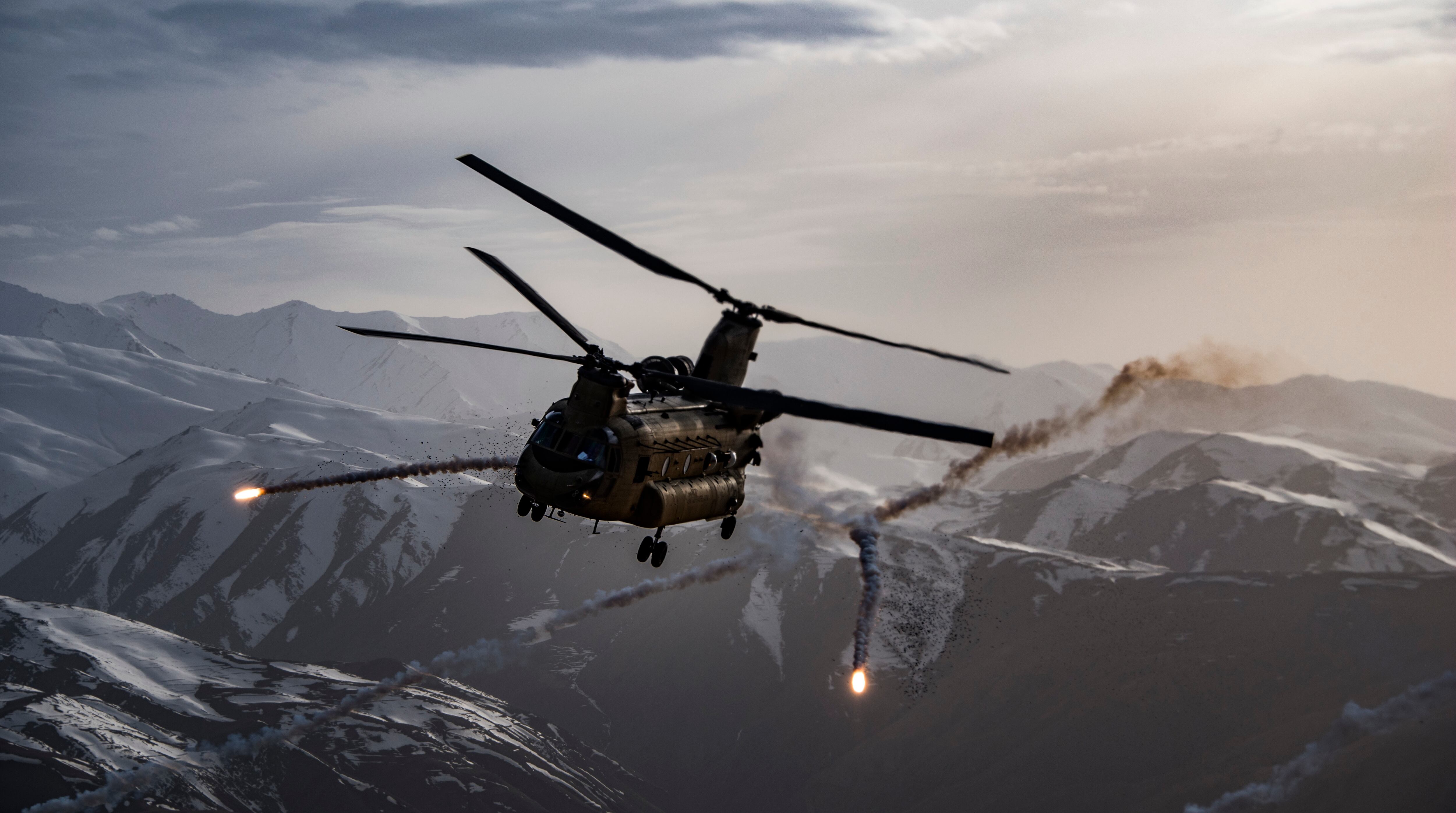WASHINGTON — The Army is building what is essentially a “cloud in the sky” for its current aviation fleet as it prepares the aircraft to fight alongside a future fleet under development, according to Maj. Gen. Thomas Todd, the program executive officer for Army aviation.
The general spoke to Defense News in an interview ahead of the Association of the U.S. Army’s annual conference.
The current fleet won’t dissolve into thin air when future helicopters are fielded, and they will be expected to fly together in operational environments across multiple domains. The Army is aiming to field a future attack reconnaissance aircraft and a future long-range assault aircraft by 2030.
“We have to figure out a way to host a common server so that we can store data, process data and transport data quicker,” Todd said. “So while they work on the future vertical lift architecture, we still have to make the enduring fleet, that will fly alongside it, work and be capable.”
So the Army is building an Aviation Mission Common Server, or AMCS, that is a stack of storage, data processing and transport capability “that’s very much a flying cloud, if you will,” Todd said.
The AMCS “will reside inside every aircraft. It has to reside in every aircraft because there has to be onboard processing and storage power,” Todd said, adding that it will be the engine that drives the associated user interface and apps as well as provide connectivity to the network overall.
The user interface will be built upon the technology developed by Northrop Grumman for the Victor-model Black Hawk. The "V" model is an L-model UH-60 with a digital, modern cockpit like the "M" model, the latest Black Hawk variant, but not with an M-model price tag. Additionally, the interface in a V model can take on new capability through apps like a smartphone. The V model wrapped up its initial operational test and evaluation in September at Joint Base Lewis-McChord in Washington state, Brig. Gen. MacMcCurry, who is the Army G-3/5/7 aviation director inside the Pentagon, told Defense News in a separate interview. He reported the tests went well and the service looks forward to building out the fleet.
The Army is currently assessing integrating the same user interface into Mike-model Black Hawks, according to Todd.
The effort to build the server is part of a larger effort to ensure the current fleet is ready to fight in multidomain operations. The Army wants to obtain multidomain dominance by 2035.
“We took a look at Army Futures Command’s guidance on exactly what those combat aviation brigades would have in them and what would be enduring. For example, the Apache would be there indefinitely,” Todd said. “We also found that the requirements for data, the transport of and use of was exponential. So ultimately it’s a problem that exists for the entire fleet, so we need to get after, at a minimum, making the enduring fleet compatible with future vertical lift, if not more capable.”
There are several cross-cutting initiatives for the current fleet to make the aircraft more agile, interoperable, survivable and integrated in multidomain operations, Todd said, and the network will play an integral role.
For example, the Army is working with the network community to replace its AN/ARC-201 radios with radios with the TSM waveform, which will improve and comply with future air-to-ground radio communications, according to Todd.
There is also work being done within the position, navigation and timing community and with the Air Force to develop antennas, processors and software that hep the current fleet to survive battle, Todd added.
And the service is working to improve power sources onboard aircraft. “There is a huge demand requirement coming, a demand signal for onboard systems and the power requirements of those is exponential. So given that it’s not linear and it’s going to grow exponentially, we have to get after alternative means,” Todd said.
The same team that is in charge of the Improved Turbine Engine Program — which will replace engines in Apaches and Black Hawks and be the engine for the future attack reconnaissance aircraft — is looking at supplemental power units, upgrades to generators and upgrades to batteries to better power onboard systems that may not require the main power system anymore, Todd said.
Jen Judson is an award-winning journalist covering land warfare for Defense News. She has also worked for Politico and Inside Defense. She holds a Master of Science degree in journalism from Boston University and a Bachelor of Arts degree from Kenyon College.








